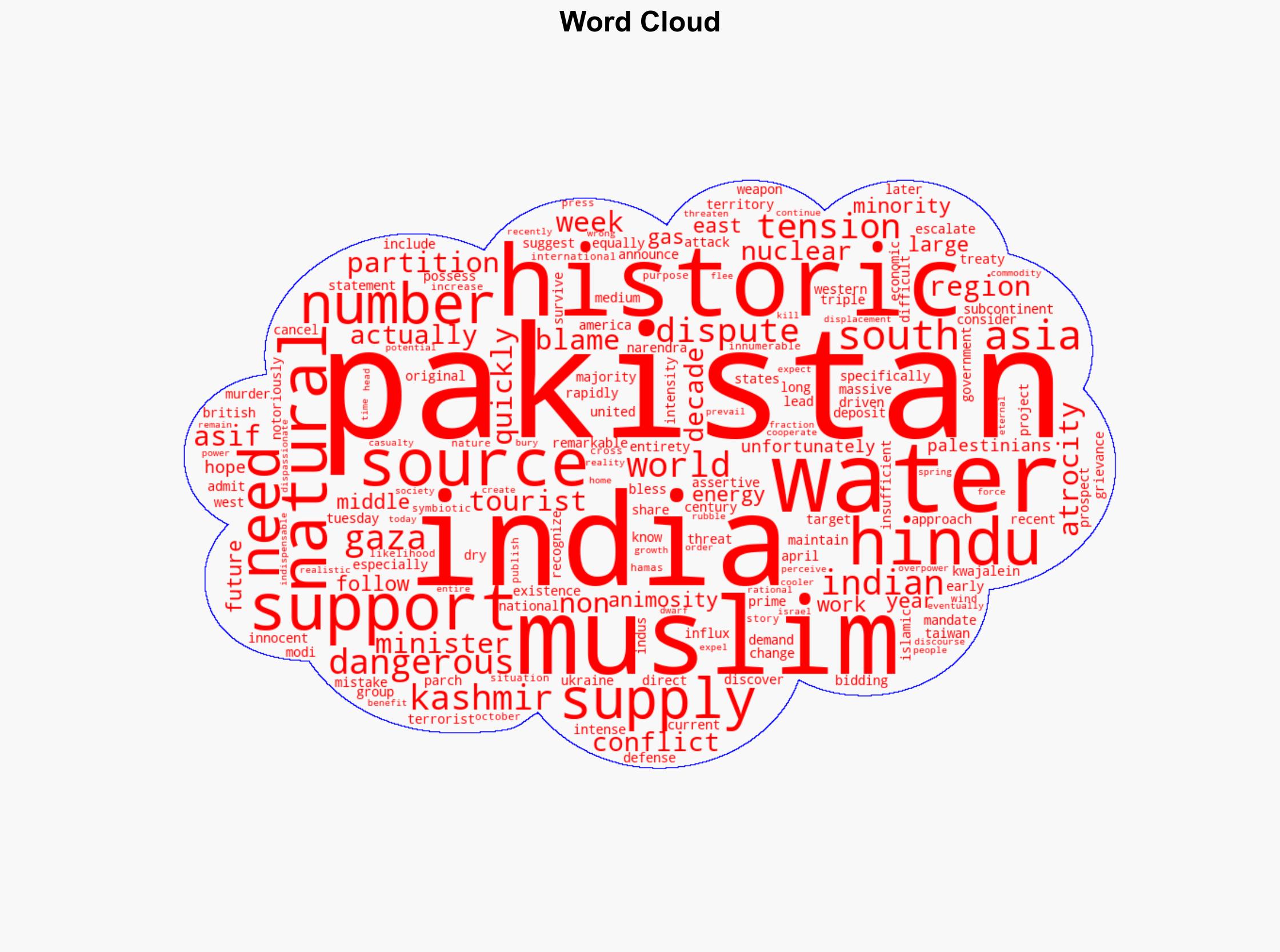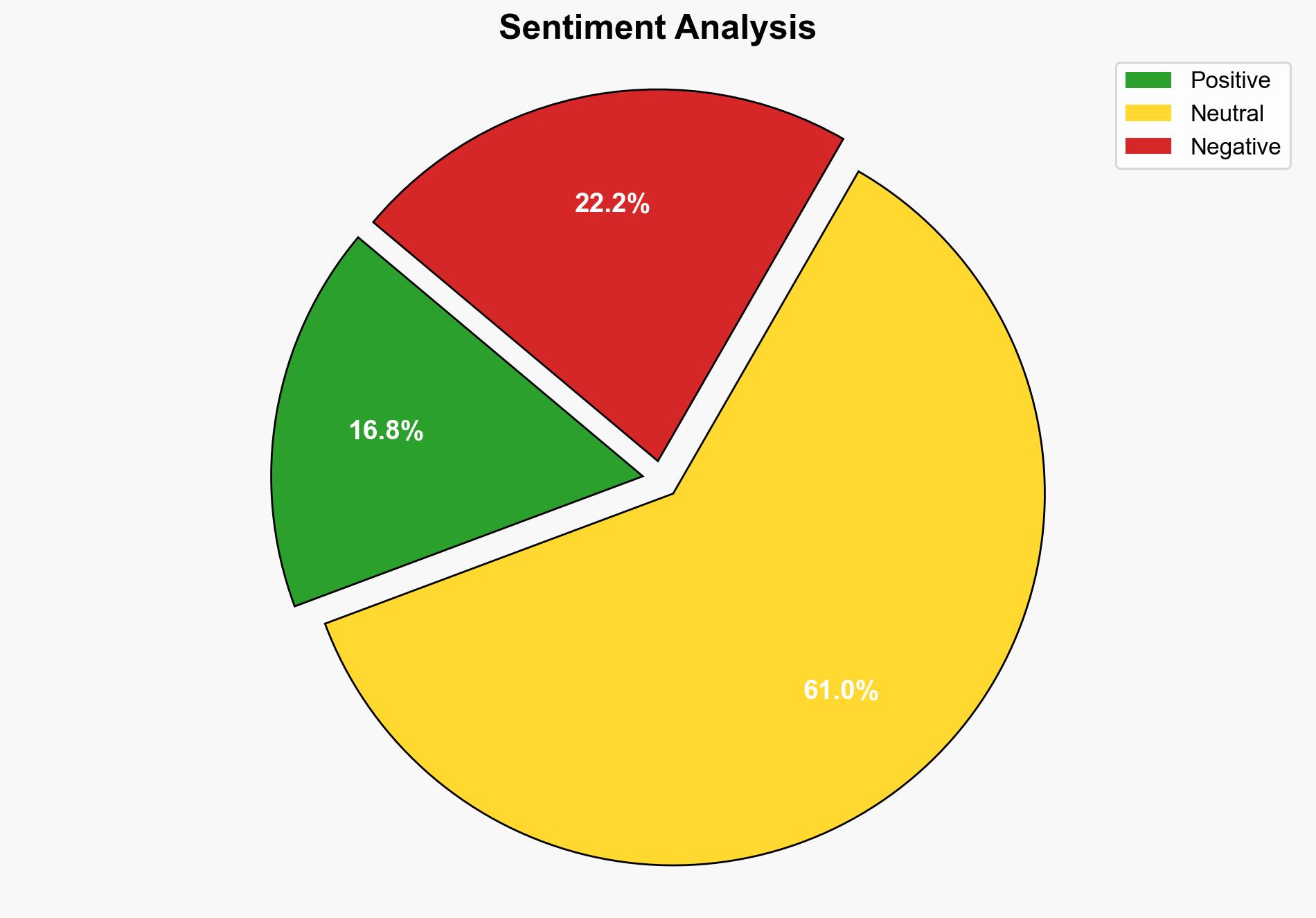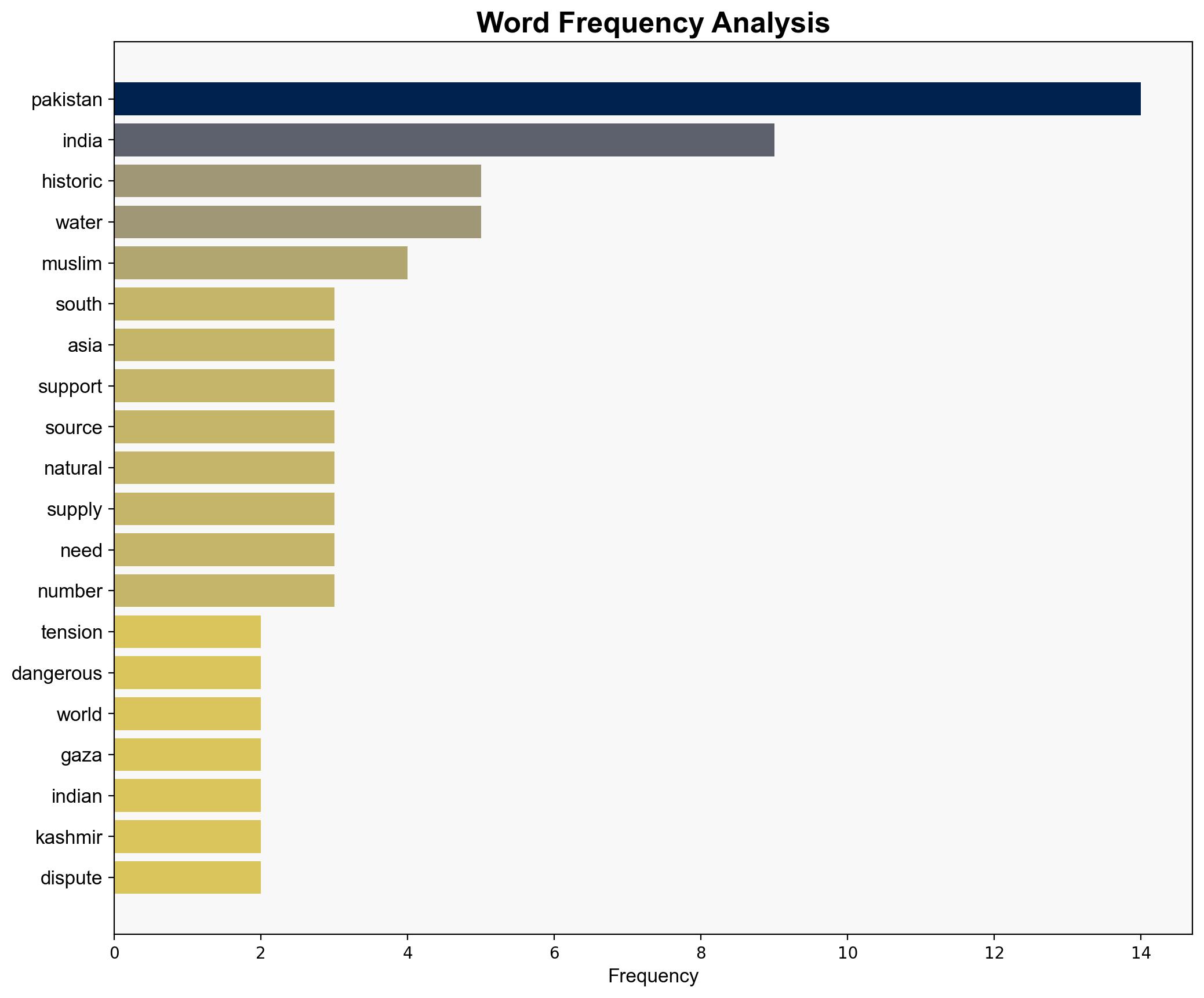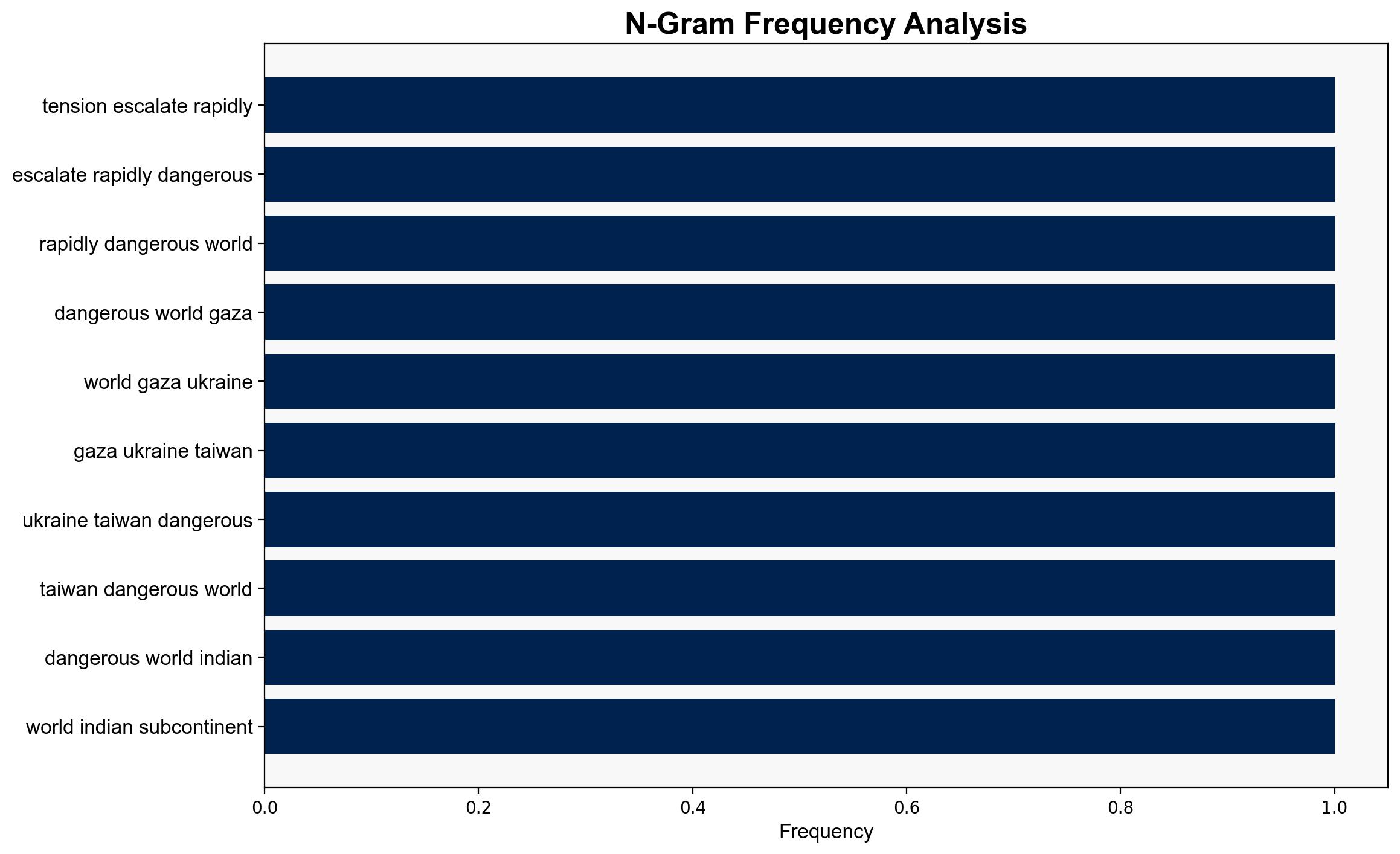The Most Dangerous Part Of The World – Forbes
Published on: 2025-04-29
Intelligence Report: The Most Dangerous Part Of The World – Forbes
1. BLUF (Bottom Line Up Front)
The Indian subcontinent, particularly the Kashmir region, remains a significant flashpoint due to historical animosities between India and Pakistan. Both nations possess nuclear capabilities, heightening the potential for conflict escalation. Recent developments, including terrorist attacks and resource disputes, exacerbate tensions. Strategic recommendations focus on diplomatic engagement and resource-sharing agreements to mitigate conflict risks.
2. Detailed Analysis
The following structured analytic techniques have been applied to ensure methodological consistency:
SWOT Analysis
Strengths: Both India and Pakistan have significant military capabilities and strategic alliances that can be leveraged for regional stability.
Weaknesses: Historical grievances and religious tensions undermine diplomatic efforts.
Opportunities: Discoveries of natural resources in Pakistan present potential for economic collaboration.
Threats: Nuclear arsenals and ongoing terrorist activities pose severe risks to regional and global security.
Cross-Impact Matrix
The interplay between resource scarcity and political tensions could lead to increased hostilities. Water disputes, such as the Indus Water Treaty, and energy needs are critical factors influencing bilateral relations.
Scenario Generation
Scenario 1: Diplomatic resolution leads to joint resource management and reduced military tensions.
Scenario 2: Escalation of terrorist activities results in military confrontation, potentially involving nuclear weapons.
Scenario 3: Economic cooperation over natural resources fosters improved relations and regional stability.
3. Implications and Strategic Risks
The potential for nuclear conflict remains a paramount concern. Resource competition, particularly over water and energy, could exacerbate tensions. The involvement of external powers may further complicate the geopolitical landscape, leading to broader regional instability.
4. Recommendations and Outlook
- Encourage diplomatic dialogues focused on resource-sharing agreements to alleviate tensions.
- Enhance intelligence-sharing mechanisms to preempt terrorist activities.
- Scenario-based projections suggest that proactive engagement could lead to a best-case scenario of economic cooperation, while failure to address underlying issues may result in conflict escalation.
5. Key Individuals and Entities
Narendra Modi, Khawaja Asif
6. Thematic Tags
(‘national security threats, cybersecurity, counter-terrorism, regional focus’, ‘cybersecurity’, ‘counter-terrorism’, ‘regional focus’)





